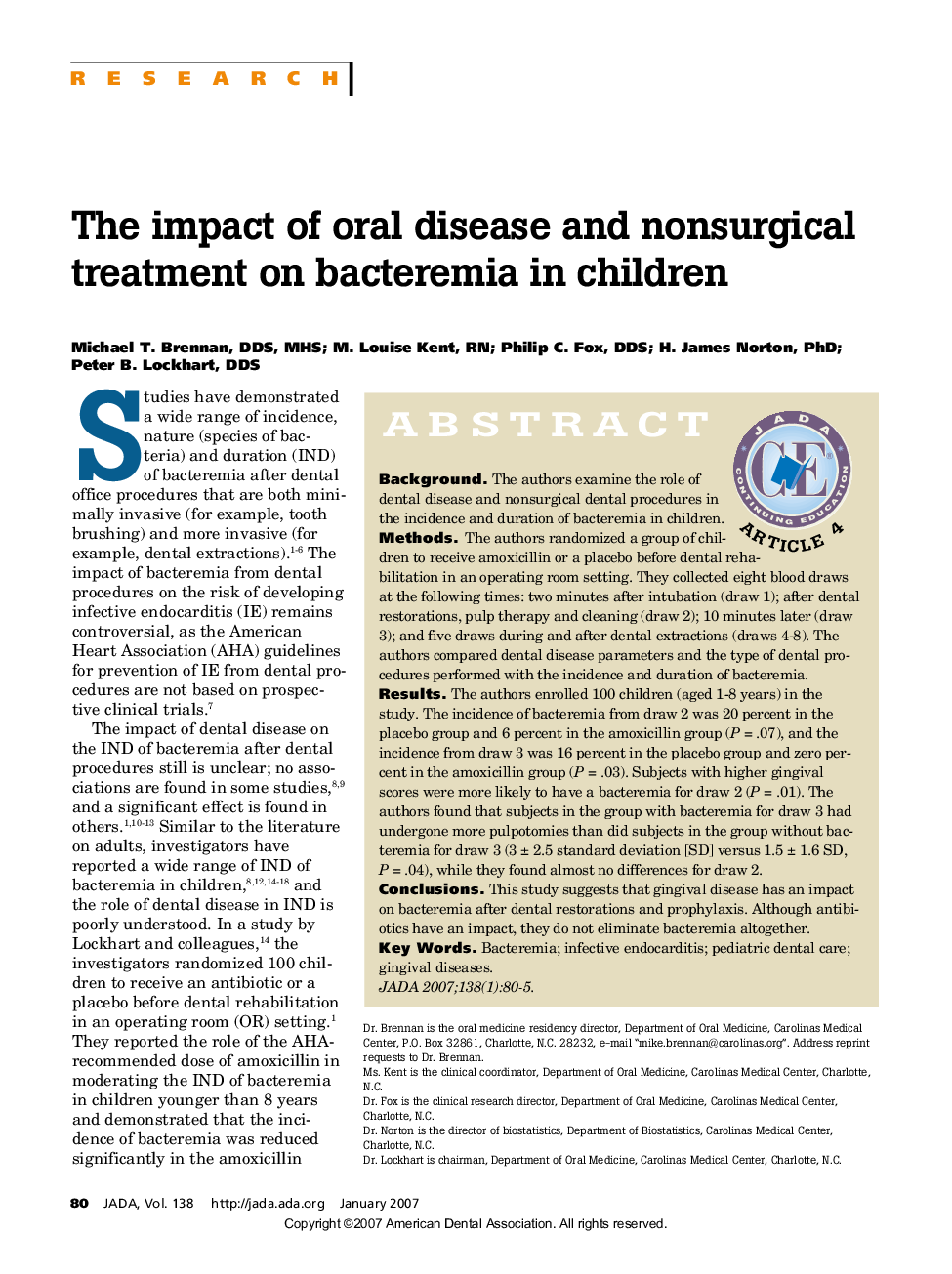| Article ID | Journal | Published Year | Pages | File Type |
|---|---|---|---|---|
| 3140576 | The Journal of the American Dental Association | 2007 | 6 Pages |
ABSTRACT BackgroundThe authors examine the role of dental disease and nonsurgical dental procedures in the incidence and duration of bacteremia in children.MethodsThe authors randomized a group of children to receive amoxicillin or a placebo before dental rehabilitation in an operating room setting. They collected eight blood draws at the following times: two minutes after intubation (draw 1); after dental restorations, pulp therapy and cleaning (draw 2); 10 minutes later (draw 3); and five draws during and after dental extractions (draws 4–8). The authors compared dental disease parameters and the type of dental procedures performed with the incidence and duration of bacteremia.ResultsThe authors enrolled 100 children (aged 1–8 years) in the study. The incidence of bacteremia from draw 2 was 20 percent in the placebo group and 6 percent in the amoxicillin group (P = .07), and the incidence from draw 3 was 16 percent in the placebo group and zero percent in the amoxicillin group (P = .03). Subjects with higher gingival scores were more likely to have a bacteremia for draw 2 (P = .01). The authors found that subjects in the group with bacteremia for draw 3 had undergone more pulpotomies than did subjects in the group without bacteremia for draw 3 (3 ± 2.5 standard deviation [SD] versus 1.5 ± 1.6 SD, P = .04), while they found almost no differences for draw 2.ConclusionsThis study suggests that gingival disease has an impact on bacteremia after dental restorations and prophylaxis. Although antibiotics have an impact, they do not eliminate bacteremia altogether.
